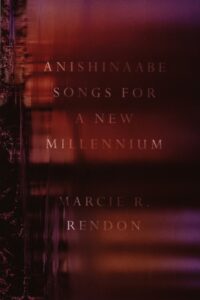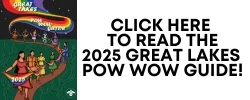Book review: Anishinaabe Songs for a New Millennium
 Reviewed by Karl Hele
Reviewed by Karl Hele
Marcie Rendon’s Anishinaabe Songs for a New Millennium is a collection of poem-dream songs drawn from the author’s background and our collective past. She is seeking to continue the Anishinaabe practice of composing songs drawn from tradition, experience, and vision for new generations of our people. The work is divided into two sections, “Dream Songs” and “Performance Songs,” yet both sections are intimately linked together through metaphor, dream, vision, and content. While unable to compose in Anishinaabemowin, Rendon’s prose appears to remain consistent with what she refers to as the cadence of “the ancient songs of my people – short, descriptive” (ix). This collection is designed to bring Anishinaabe song, drawing from tradition and in the colonizer’s language, into a new millennium. By tying her poem-dream songs into past creations and listening to the ancestors, I believe Rendon is attempting to uncolonize and appropriate English for contemporary Anishinaabe usage in a unique manner. Moreover, by publishing her poem-dream songs, Rendon seeks to ensure that the knowledge and tradition contained within can be passed onto succeeding generations (x).
Section I: “Dream Songs” contain 32 creations of various lengths that are all untitled. In leaving each piece untitled, Rendon is attempting to convey a sense of agelessness. Such untitling allows the reading to experience each piece as a discrete standalone poem-dream as well as a single continuous ‘narrative.’ I found this an interesting method to force the reader, when encountering blank space on the page, to listen rather than simply read. It also allowed me to interact and learn from each piece individually then as a whole upon re-reading. Simply, the lack of titles gives readers a different feel depending on their approach. It is a path of learning, discovering, and awareness that leads to better awareness.
Section II: “Performance Songs” contains 13 creations each of which are titled, thereby hinting at the contents and offering some direction toward interpretation. These pieces appear to be created in reaction to specific events, sounds, or emotions. For instance, “White Man’s Music” describes how this music fails to make connection between people and the land. It draws from Rendon’s introduction wherein she states that the poem-dreams and songs come from listening to the land and ancestors. Or, in “Maddog & Ogichidag” where mission schools have stripped Maddog memory leading to “Loneliness / Confusion / Delusional / Illusions” and alcoholism (41). Ogichidag seeks to draw Maddog back to the Anishinaabe path and restore his soul for “There are no / Broken memories / Only forgotten destinies” (44). The poem-dream performance song while dark contains a light and positive message of Anishinaabe strength, resilience, and survivance. This connects to the vision behind Rendon’s poem-dreams to rebuild, reawaken, and create Anishinaabe culture in this millennium.
Overall, Anishinaabe Songs is a wonderful poetic collection of materials that elegantly combines tradition and contemporary by drawing on the voices of our ancestors. In reading the songs, I found it necessary to listen as much as read the words on the page. You also need to open your mind and heart to the images and sounds Rendon is drawing through the written words. Themes of resistance, colonization, connection to nature, Mother Earth, and the power of women are contained within these scant pages. They attest to the continued existence and impossibility of exterminating the Anishinaabe people, or any Indigenous nation. Rendon’s Anishinaabe Songs is a testament to our resilience, strength, and continued connections to the voices of our ancestors regardless of our spoken language. It is a must-read/sing collection for everyone.
Marcie R. Rendon, Anishinaabe Songs for a New Millennium. Minneapolis: University of Minnesota Press, 2024.
ISBN: 1517917433


